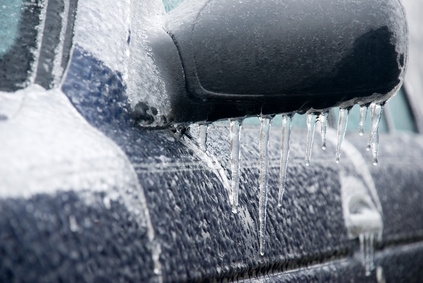
Your car won't start in cold weather if water or condensation gets into the fuel line and freezes there. Frozen fuel lines prevent gas from moving into either your engine's fuel injector or carburetor. Worse, the moisture can eventually cause rust and other damage to the metal parts of your engine's fuel system. Using exterior heat to warm the fuel lines can sometimes unfreeze the moisture enough so that you can start the car, but if you do not completely dry out the moisture that causes the line to freeze in the first place, the problem can recur when the car cools down.
Purchase a commercially available isopropyl-based fuel line antifreeze, such as STP, HEET or Pyroil. You can buy these products at most automotive supply stores and service stations.
Pour the antifreeze directly into the fuel tank. It does not matter if the tank is full or not--the antifreeze will not harm your tank, the engine or the fuel system and its lines.

Wait 15 to 20 minutes, so that the antifreeze has time to reduce and remove the moisture.
Start the engine. If the engine still does not engage, wait another 15 to 20 minutes and try again. You can also use a hand-held hair dryer to focus warm air onto frozen fuel lines to speed up the unfreezing.
Recap the bottle and store any unused fuel line antifreeze in a dry area. If you carry the antifreeze in your car, seal it in a moisture-proof, sealable plastic bag to avoid leakage or contamination.